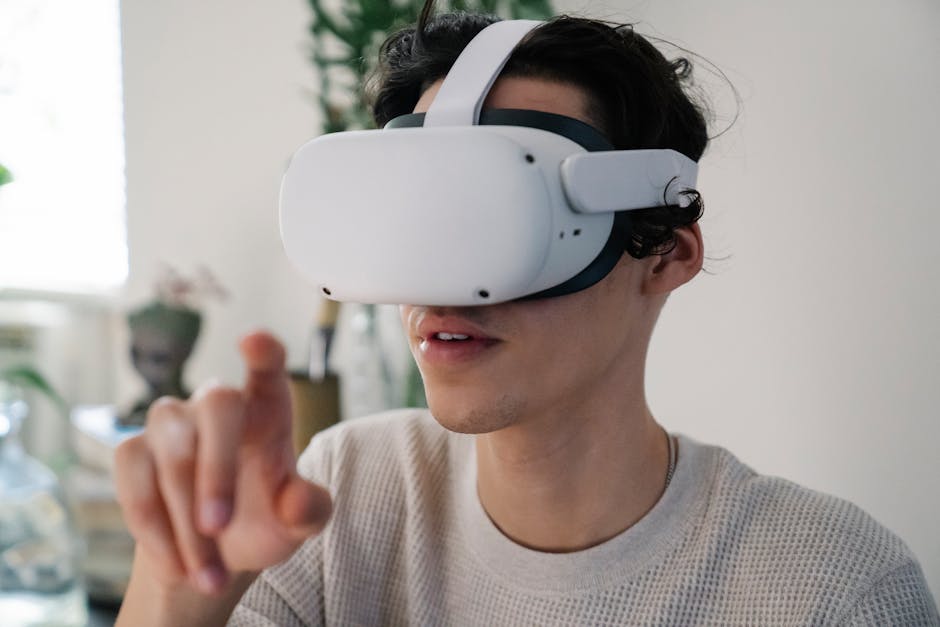Personalizing the EV Experience: Custom Interfaces Ahead
The future of electric vehicles (EVs) isn’t just about sustainability or impressive range; it’s increasingly about personalization. In fact, the way we interact with our cars could redefine the entire user experience. Imagine stepping into a vehicle that’s tailored just for you, where interfaces are as adaptable as your personal style or driving preferences. Welcome to the era of customizable interfaces in EVs—a transformation that's not just crucial for enhancing user satisfaction but also for advancing technology in the automotive sector.
Why Personalization Matters in EVs
Personalization in electric vehicles is essential for multiple reasons: enhancing the user experience, ensuring customer satisfaction, and increasing engagement. In a world where technology has become ingrained in our daily lives, our expectations regarding vehicle interfaces are rising. We want our cars to behave like smartphones, with interfaces that learn from us and adapt to our personal preferences. A survey from McKinsey & Company indicates that consumers are now willing to pay more for personalized services, emphasizing the demand for tailored options in all sectors, including automobiles.
Notably, evolving technologies—such as Artificial Intelligence (AI) and machine learning—are paving the way for advanced personalization features. These technologies allow cars to create personalized settings based on individual driving patterns, music preferences, and even mood. For example, if a driver routinely selects calming music during rush hour, the vehicle could learn to automatically suggest similar tracks without any input. This kind of intelligent design enhances not only the driving experience but also promotes emotional well-being while on the road, aligning with what many enthusiasts are now calling “mindful driving.”
Current Trends in Personalization
Indeed, we’re already witnessing some exciting advancements in the realm of customizable interfaces within EVs. From voice recognition systems that adapt to individual speech patterns to touch-sensitive displays that respond dynamically based on user behavior, the landscape is changing quickly. Manufacturers like Tesla and Rivian, for example, have incorporated unique personalization features that allow drivers to modify everything from climate control to seat positioning via their mobile apps.
AI's role in this transformation cannot be overstated. By harnessing predictive analytics, manufacturers can gather data over time to optimize the user experience, identifying specific usage patterns and adjusting settings proactively. This aspect of AI is particularly intriguing as it offers the potential to redesign how we interact with our vehicles fundamentally. If you're interested in how AI will enhance personalization further, check out our article on AI and EV personalization.
Integrating Biophilic Design
One of the most inspiring aspects of interior design in EVs is the potential for biophilic elements—features that bring the feel of nature into the car environment. Imagine your vehicle’s UI displaying soft color palettes inspired by nature or using materials that are not just attractive but also environmentally sustainable. This ties back into personalization, as users can choose elements that reflect their tastes while also promoting a sense of calm.
Biophilic design in EV interiors goes beyond aesthetics. For example, soft ambient lighting that adjusts to the time of day can evoke feelings of comfort and relaxation while driving. As we blend technology with nature, the user experience in electric vehicles can become more holistic, leading to enhanced mental wellness. Interested in how biophilic design can redefine vehicular interiors? Check out our piece on revamping EV interiors.
Features Shaping the Future of EV Customization

Voice-Controlled Systems

Imagine stepping into your car and simply saying, "Take me home," with the vehicle instantly adjusting the climate, selecting your favorite playlist, and navigating the fastest route—all while learning your preferences over time. Voice-controlled systems in EVs are set to drastically enhance personalization. With advancements in natural language processing, these systems can understand both commands and nuances, creating an intuitive and human-like interaction.
Adaptive User Interfaces

Adaptive user interfaces are poised to be a game changer. Whether you’re looking at a touchscreen or an augmented reality head-up display (HUD), interfaces can adjust based on how and when you interact with them. For example, simpler displays can dominate during heavy traffic, while more detailed navigational aids become available during less demanding drives. This adaptability can significantly reduce cognitive load, allowing drivers to concentrate on the road ahead rather than juggling multiple interfaces.
Data-Driven Customization

The driving behavior data generated by EVs can be a goldmine for personalization. With consumers becoming increasingly comfortable with data sharing, privacy-conscious brands can leverage this information to provide tailored experiences. Data-driven customization can identify individual preferences such as frequently traveled routes, preferred driving styles, or even common adjustments made to mirrors and seats.
Enhanced Connectivity Features

Connectivity is at the heart of the personalized experience. Features like vehicle-to-everything (V2X) communication can bring a new level of customization to your driving experience. For instance, your vehicle could communicate with smart city infrastructure to learn about traffic flows or adjust charging times based on utility rates. Imagine getting personalized route suggestions that consider your preferences, weather conditions, and even local events.
Augmented Reality in User Interfaces

Augmented reality (AR) has enormous potential in personalizing the EV experience. Imagine a windscreen that not only displays navigation routes but also highlights points of interest, nearby charging stations, or warns about traffic conditions—all geared to your specific interests and needs. By integrating AR into the user interface, manufacturers could create a highly interactive experience that feels almost like a personal assistant guiding you through your journey.
Consumer Expectations and Ethical Considerations

While the potential for personalization is exciting, ethical considerations must not be overlooked. Consumers are understandably cautious about data privacy, especially when personalization heavily relies on user data. Brands must be transparent about how they collect and use data while also providing robust security measures. Striking the right balance between personalization and privacy is crucial, as consumers will likely be hesitant to embrace features they feel come at the cost of their privacy.
Setting Consumer Expectations

Consumers expect a seamless and intuitive user experience from their EVs. Drawing parallels with smartphones, where users can customize apps and interfaces, today's consumers look for that same level of innovation in their vehicles. Hence, brands must adopt a consumer-centric approach to design—one that not only focuses on delivering advanced technology but also prioritizes user experience.
The Role of Feedback in Driving Innovations

Feedback loops have become essential in fostering personalization. Manufacturers are increasingly turning to customer insights to refine interfaces, ensuring they truly meet user needs. This continual improvement enhances user satisfaction, setting the stage for further innovations.
Emotional Connection & User Loyalty

As electric vehicles evolve, the emotional connection users develop with their personal vehicles may strengthen. Customization is about more than utility; it’s about identity. Personalizing features to resonate with users can cultivate a sense of loyalty that drives brand affinity.
The Road Ahead: Future Trends in Customization

Looking ahead, the future of personalized EV interfaces holds even more exciting prospects. As technology advances, the interoperability of devices will become a norm. EVs will not only be customized for individual drivers but also have the ability to interact with smart homes and other IoT devices.
Voice-Activated AVs: The Next Frontier

Imagine commuting in a fully automated vehicle where voice commands drive function across both driver and passenger interfaces. This might include controlling entertainment, navigation, and environmental settings simply through your voice, all personalized to your preferences, even adjusting for multiple users in one vehicle.
Community-Enhanced Personalization

As EV communities grow, there could be opportunities for users to share their settings and experiences with each other, much like app ecosystems. A user in New York might find inspiration in the way a fellow EV owner in California has customized their car's interfaces.
Resilience to External Factors

Weather, traffic conditions, or even personal health can affect driving experiences and preferences. Future EVs might adapt to these variables in real-time, optimizing settings accordingly. For instance, a vehicle could automatically cool the interior on hot days or suggest a scenic route if it detects stressful driving conditions.
Final Thoughts
The future of personalization in electric vehicles is bright. Customizable interfaces have the power to transform user experiences, making driving not only more enjoyable but also aligned with individual preferences and lifestyles. As we move forward, it will be critical for manufacturers to navigate consumer expectations, ethical considerations, and emerging technologies while fostering a sense of connectivity and community.
Are you ready to explore this exciting new world? The road to personalized driving is not just changing the way we drive; it’s transforming our relationship with our vehicles—creating meaningful interactions that truly resonate.
For an in-depth analysis of how EVs are influencing more than just transportation, look into our articles on EV aesthetics and the impact of autonomous driving. Explore how the evolution of Electric Vehicles is ushering in a new era of customized experiences, integrating technology, and human values in staggering new ways.






